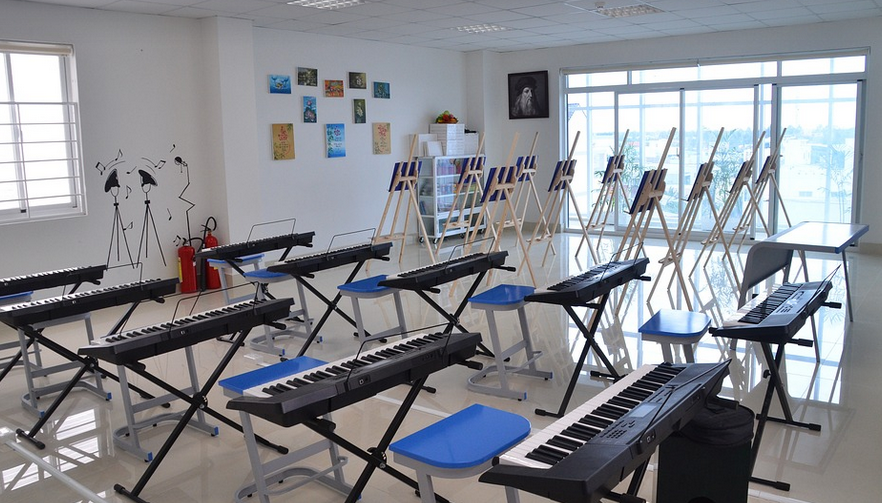
Stepping Beyond Traditional Paths
So, you’ve finished high school or college and are looking to expand your horizons beyond a traditional bachelor’s degree. Perhaps you’re feeling drawn to specific skills rather than formal academic pursuits, or maybe you just want to explore something new – whatever the reason, you’re in good company! The world of post-secondary education is bursting with opportunities that go far beyond four-year degrees, offering a more personalized and flexible approach to learning. Let’s dive into what exactly that means.
What Exactly is “Post-Secondary Non-Tertiary Education”?
“Post-secondary non-tertiary education,” also sometimes called “post-secondary vocational or technical training,” encompasses a wide range of programs delivered after high school. It’s a space where you can acquire practical skills, gain hands-on experience, and prepare for fulfilling careers in various industries.
Think about it like this: While the traditional focus on getting a bachelor’s degree has dominated, post-secondary non-tertiary education is stepping up to offer pathways that are more aligned with your individual interests and goals. It’s not just about theoretical knowledge; it’s about learning how to actually *do* things—and doing them well.
Types of Programs: From Trade Skills to Arts
The beauty of post-secondary non-tertiary education lies in its diverse offerings. Here’s a glimpse at some common programs:
* **Vocational Training:** These programs focus on practical skills like plumbing, electrical work, automotive repair, welding, culinary arts, and much more. Think hands-on training that will equip you for immediate entry into the workforce. * **Technical Programs:** Delve deeper into specific technical areas, such as computer programming, web design, graphic design, or cybersecurity. These programs are designed to train students for specialized roles in tech fields. * **Trades and Apprenticeships:** A practical approach that combines classroom instruction with real-world experience under the guidance of experienced professionals. This method allows you to learn on the job while earning your certification – a winning combination! * **Certs and Diplomas:** These shorter, focused programs offer specialized training in specific areas like medical assisting, cosmetology, or dental hygiene. They’re designed to provide quick entry into well-paying fields with high demand.
The Benefits of Non-Tertiary Education: Why It Matters
Choosing post-secondary non-tertiary education is a strategic choice that can open doors to multiple opportunities:
* **Career Pathways:** With skills in high demand, you’re better prepared for successful careers. These programs focus on practical skills and career readiness, helping you navigate the world of work with confidence. * **Flexibility and Convenience:** These programs are often designed to be more flexible than a traditional four-year college degree. You can choose from online or in-person classes, evening or weekend options, and even shorter program lengths to fit your schedule. * **Faster Entry into the Workforce:** Often, non-tertiary education leads to quicker entry into the workforce compared to traditional degrees. This means you can start earning a living sooner after graduating. * **More Affordable Options:** Compared to the financial burden of a four-year college degree, these programs are often more financially accessible, offering more affordable pathways to success.
So why not explore what post-secondary non-tertiary education can offer you? It’s a world of possibilities waiting to be unlocked.
Making the Right Choice: Finding Your Ideal Path
Choosing the right program is critical for a successful journey. Here’s how to navigate this decision:
* **Self-Reflection:** Start by honestly reflecting on your interests, skills, and career goals. What drives you? Where do you see yourself in five years? * **Research Programs:** Explore different programs offered at colleges, technical schools, or industry training facilities. Look for programs that align with your interests and career aspirations. * **Talk to Professionals:** Connect with people who work in fields that interest you—get their insights on the skills required, the day-to-day realities of the job, and any specific advice they might have. * **Consider Your Budget:** Determine how much funding you can afford – scholarships, grants, student loans, or even financial aid options are all potential avenues to explore.
Don’t be afraid to ask questions! It’s your journey, and it deserves careful planning.
Beyond the Classroom: What Happens After?
Graduation is just a beginning, not an ending. Post-secondary non-tertiary education is about equipping you with tools for a successful future.
* **Internships:** Gain hands-on experience and build your resume through internships. This might involve working on real projects within the industry you’re targeting. * **Networking:** Build lasting connections by attending workshops, career fairs, or networking events. These opportunities will help you connect with potential employers and mentors in your field of interest. * **Lifelong Learning:** Embrace the culture of continuous learning that thrives in many post-secondary non-tertiary programs. These programs are designed to equip you with skills that stay relevant throughout your career, and encourage continued growth and development.
Don’t underestimate the value of these programs! They can equip you with a valuable skill set and open doors to exciting opportunities within your chosen field.
Start Your Post-Secondary Journey Today
The world is filled with diverse possibilities that extend far beyond traditional academic paths. Post-secondary non-tertiary education offers a more personalized approach to learning, preparing you for life after graduation and helping you navigate your career journey with confidence.





